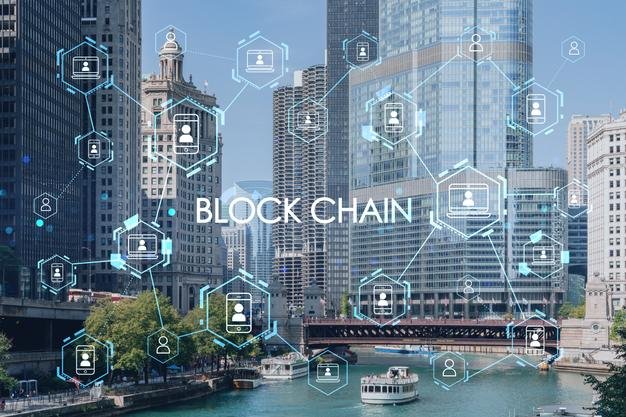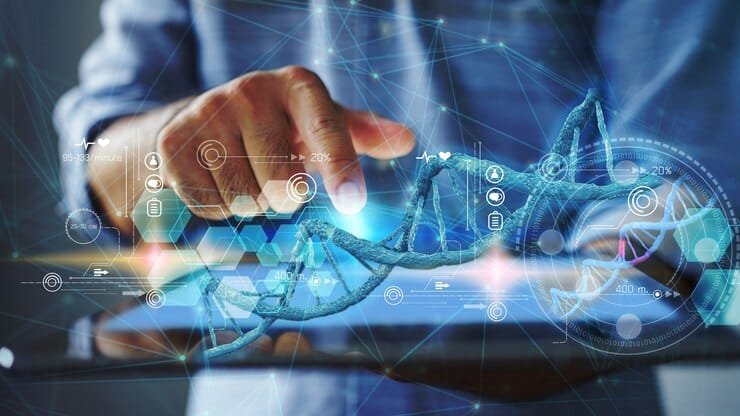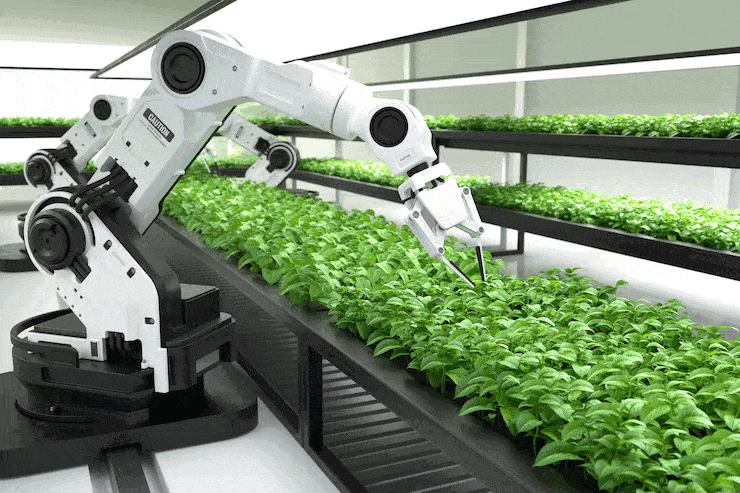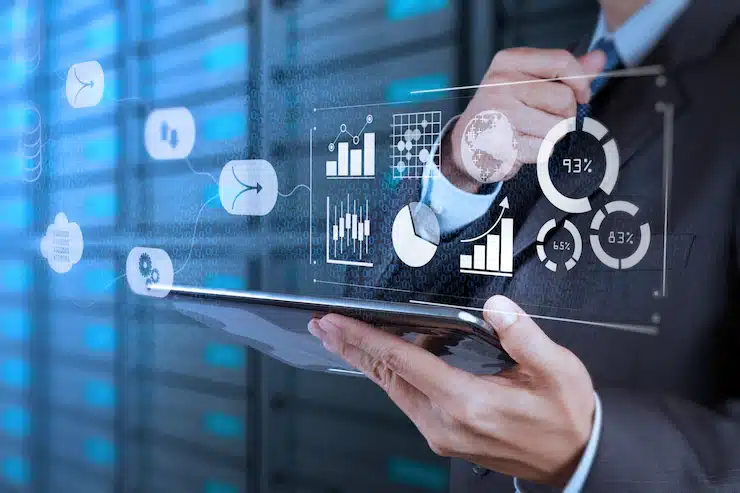Innovative Technologies : Technology has revolutionized our lives and interactions with the world around us, from how we communicate to how we conduct day-to-day activities. Technology is a powerful force that is shaping our future through advances such as artificial intelligence, robotics, biometrics and the Internet of Things – among many other innovations shaping it all.
From 3D printing to virtual reality, these 10 cutting-edge technologies are leading the way towards a brighter, more efficient, and more connected future. By adopting and using these innovations we can build an accessible future where everyone has equal access.
1. Biorevolution

Biorevolution Biorevolution refers to the process of evolving biological systems of organisms so they better fit the conditions in their environment, whether caused by climate change, limited resources, or external factors such as competition between species. As a result of biorevolution, organisms’ biological systems become modified so as to better suit their surroundings.
Humanity has been changing and evolving for millennia. Through advances in genetic engineering, synthetic biology, and other biological technologies, humans now possess the power to speed up this process of change and evolution. Biorevolution occurs both top-down and bottom-up; top-down occurs when humans select specific traits from one organism before transferring them onto another organism.
Bottom-up biorevolution occurs when humans use biotechnology to accelerate natural evolutionary processes.
2. Quantum And Neuromorphic Computing

Quantum computing is the theoretical practice of employing quantum-mechanical phenomena such as superposition and entanglement to solve computational problems. A quantum computer would operate exponentially faster than traditional computers due to operating at an atomic level and processing information more quickly. Unfortunately, quantum computers remain mostly theoretical, although researchers are working towards making them reality.
Neuromorphic computers are an emerging type of computer architecture modeled on human brain structures. Similar to how the brain utilizes very little energy and operates more efficiently by being highly distributed; additionally, neuromorphic computers use even less electricity and can process multiple tasks concurrently compared with traditional computing solutions. On top of their low energy usage and task parallelism capabilities, neuromorphic systems also feature artificial intelligence, machine learning and massive data processing capabilities.
Quantum computing holds great promise to revolutionize industries, accelerate discovery and invention, and unleash groundbreaking services and applications. Neuromorphic computing may also prove revolutionary; with potential uses including autonomous vehicles and smart cities; biosciences/personalized medicine/personalized treatment plans/fintech; financial services; quantum computing; as well as other fields.
3. Internet Of Things

Internet Of Things The Internet of Things (IoT) refers to a global network of physical objects containing electronics, software, sensors and network connectivity which enables these items to collect and exchange data. IoT technologies are revolutionizing our lives and working environments – projected to reach nearly $33 trillion by 2022! IoT technologies will have major ramifications across industries such as healthcare, retail, transportation energy government.
IoT devices have long been considered among the 10 most innovative technologies of this decade, primarily used to monitor or control individual devices or systems; but now they are taking on new meaning known as Industrial Internet of Things or “Industry 4.0”.
Industrial Internet of Things expands upon IoT devices by including sensors, control systems, robotics, and other machines as sensors, control systems and robotics are part of this network. At its center will lie technological innovation: new innovations will emerge to support and maintain it over time.
4. Blockchain Or Trust Architecture

Trust architecture refers to the framework that regulates trust between entities on a network. A famous example is the Internet, with its distributed network of computers that communicate and transfer information without needing central authority for approval or permission to do so. Its trust architecture provides secure communication while making information transfer possible without trusting each computer within it.
Blockchain technology is a distributed ledger (or “trust architecture”) where each computer in a network keeps an ever-expanding public ledger of all transactions that have ever taken place, eliminating intermediaries like banks, payment processors, and other trusted third parties from the process.
Blockchain technology is one of the most groundbreaking, transformative, and transformative innovations since Internet’s inception.
5. New Energy Solutions For Clean Energies

With greenhouse gases increasing their impact on our planet and rising carbon emissions, finding renewable and clean sources of energy production has become ever more essential. New technologies have emerged which offer more cost-effective options.
Clean energy solutions are being created through solar and wind technologies, as well as nuclear and fossil fuel energy sources – typically more polluting forms of power production. Furthermore, new clean energy solutions that are environmentally sustainable yet economically feasible have also been devised.
Investment in clean energy is expected to top $2.3 trillion annually by 2050, which will go toward creating new technologies and infrastructure to enhance and increase production of clean energies. Clean energy solutions are already being created all around the globe; however, intensified efforts must be undertaken so they can meet this rising energy demand.
6. Virtual And Augmented Reality

Virtual reality (VR) and augmented reality (AR) technologies are becoming more accessible and rapidly transforming various industries, particularly health care. One area where they may prove particularly transformative is providing new tools for clinical training and patient care as well as connecting health care providers across remote locations as well as engaging new tools for health education.
VR and AR technologies look set for an extremely bright future, as innovations and technologies continue to emerge almost daily, and more industries recognize the advantages of using them. VR/AR tech should become even more accessible and intuitive over time.
7. Genomics

Genomic science involves sequencing DNA and examining its genes within an organism or piece of DNA in order to gain insight into an individual’s health, risk factors and disease susceptibilities. Thanks to advances in sequencing technology and computing power, genomics research is rapidly progressing, providing a wealth of knowledge about human health and disease – from understanding disease development to discovering potential treatment solutions, genomics is an integral component of biomedical research.
New technologies are making genomics faster and more accessible than ever before, thanks to advances like cloud computing and artificial intelligence. Genomics data can now be processed at an unprecedented speed and made accessible to researchers worldwide – helping the genomics industry expand to an estimated market size of $38.9 billion by 2022.
8. Applied Artificial Intelligence And Machine Learning

Artificial Intelligence (AI) and machine learning are closely intertwined technologies. AI refers to the ability of computer programs or devices to act like human beings; machine learning refers to their capacity for “learning” from experience. Both AI and machine learning continue to expand as fields of study, with many new applications emerging and being created every day.
AI and machine learning technologies are increasingly being applied across an expanding number of fields, from healthcare to education and finance. AI/ML technology holds enormous promise to transform our lives – the challenge now lies in utilizing them responsibly and ethically for maximum good.
9. Cloud And Edge Computing For Distributed Infrastructure

Cloud computing is an internet-based model for delivering software, services and other technologies. Amazon, Google and Microsoft have created vast computing power through data centers they make remotely accessible; this enables organizations to take advantage of computing resources without maintaining hardware and software required for provision. While cloud computing offers many benefits for organizations using it in-house, it also has some drawbacks.
At present, data centers are highly centralized – meaning all data is sent and processed in one central location – which creates security and privacy issues, and prevents distributed resource utilization. New technologies called edge computing or distributed infrastructure allow data processing closer to where it was collected for more secure and efficient processing systems.
10. Datafication

Datafication is an innovative technology that is revolutionizing our daily lives, from work and play, to living out our dreams. It entails collecting, analyzing and applying data in order to gain insights and make decisions more efficiently. Businesses using datafication have found new ways of personalizing customer experiences while improving services with access to real-time data for quick analysis of trends and opportunities quickly identified with immediate decisions that help automate business processes, enhance customer care quality and reduce costs leading to improved efficiency, productivity, and profitability of operations.
Datafication has helped organizations to gain greater insight into their business operations. By collecting and analyzing data, companies can better understand customer behavior, identify areas for improvement, and enhance products and services. Furthermore, datafication allows organizations to provide more personalized experiences for their customers; companies can leverage data to deliver tailored content, products, and services and create an engaging customer journey experience for all.
Future businesses will increasingly rely on datafication for decision making and customer satisfaction enhancement, using it to make smarter decisions, enhance products/services offerings and ensure continued competitive advantage in an ever-evolving business landscape. Datafication will remain essential in helping organizations thrive within this new globalized world of business.
Also Read : Exploring The Future Of New Technology – Predictions and Possibilities
